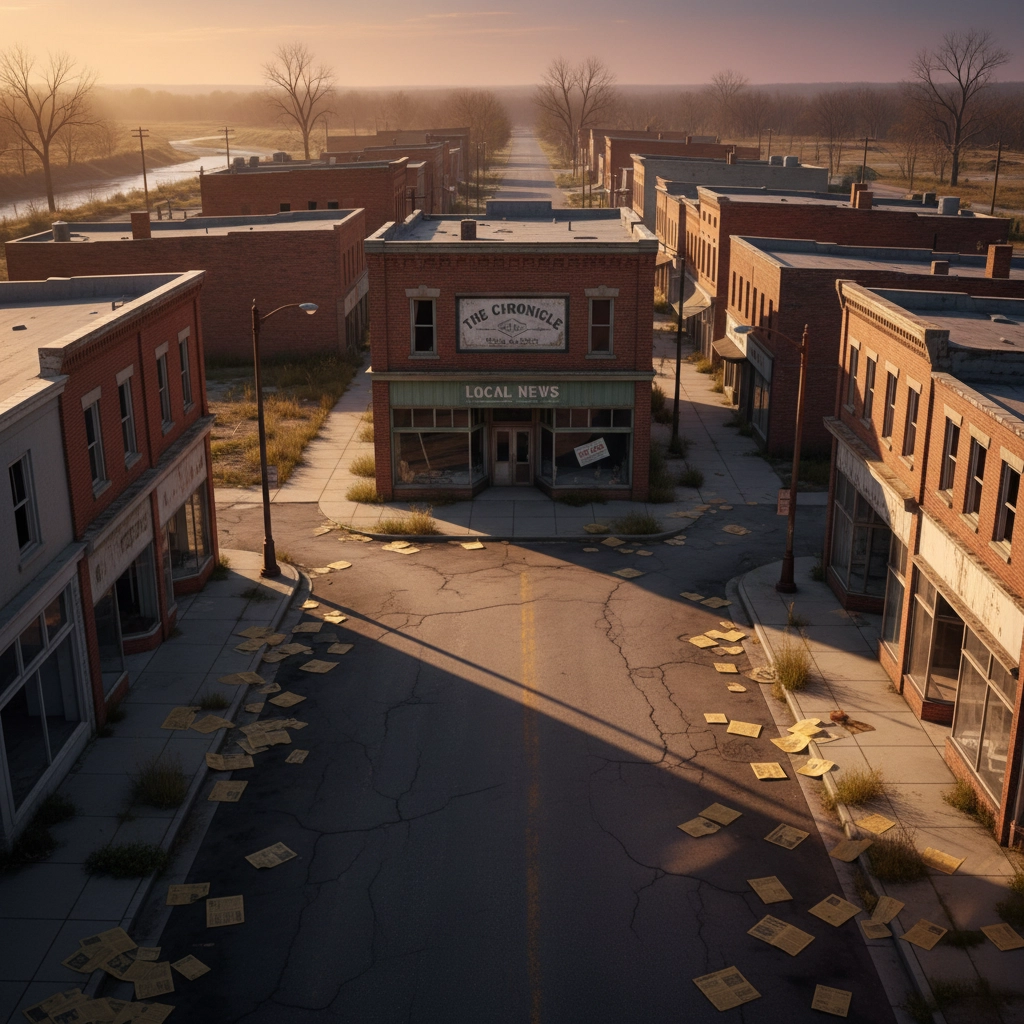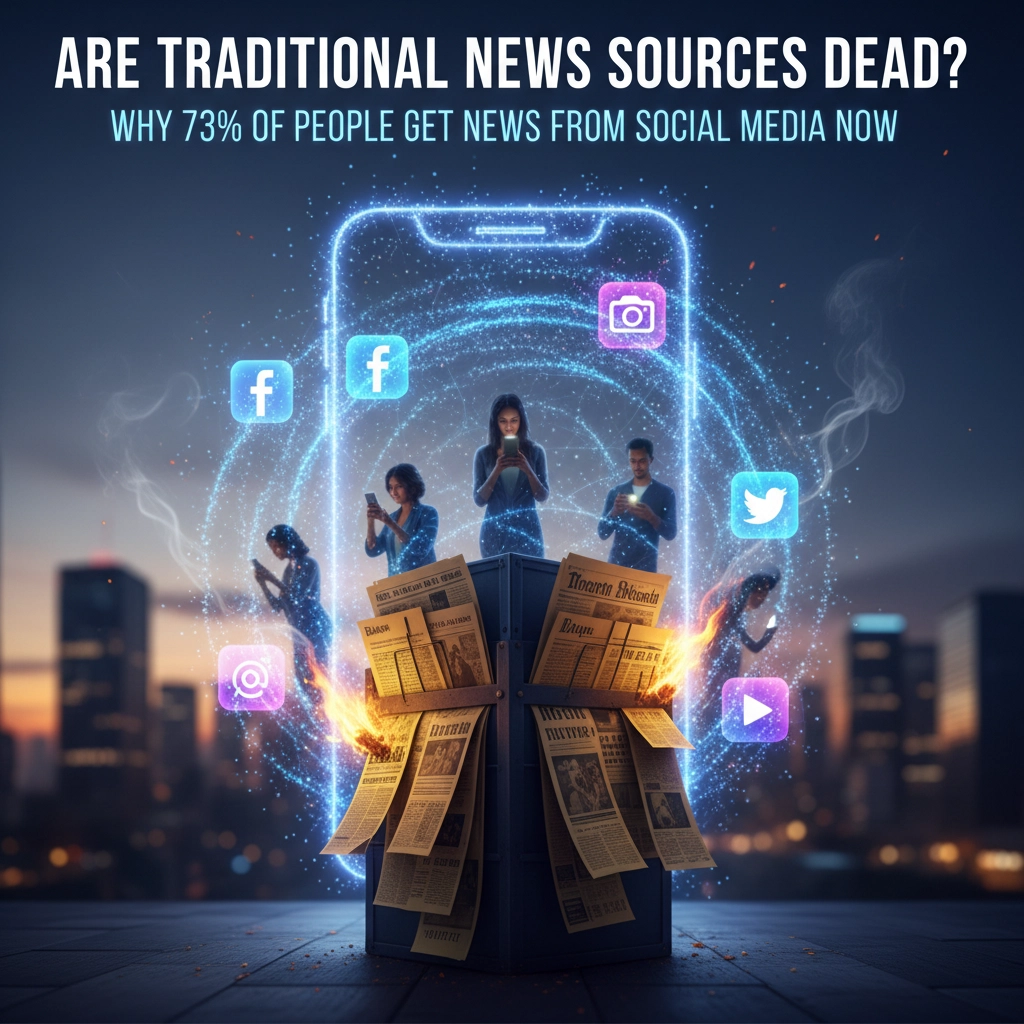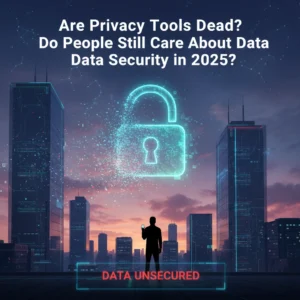Remember when getting your news meant waiting for the 6 PM broadcast or grabbing the morning paper from your driveway? Those days feel like ancient history now. Your mom probably gets her breaking news from Facebook. Your younger brother's scrolling TikTok for world updates. And you? You're probably reading this after seeing it shared on Reddit.
Here's the thing though – that viral stat about 73% of people getting news from social media? It's not quite right. The real numbers are still pretty shocking: 34% of Americans now use social media as their main news source, up from just 4% in 2015. That's nearly a 10x increase in a decade. And about 53% of U.S. adults get news from social platforms at least sometimes.
So no, traditional news isn't completely dead yet. But it's definitely on life support, and social media is slowly pulling the plug.
Traditional Media's Steep Decline
The newspaper industry is getting absolutely demolished. Since 2005, it's lost more than three-quarters of its jobs. Just this past year alone, employment dropped another 7%. We're talking about 136 newspaper closures in the last year – that's more than two shutting down every single week.

Here's what's really wild: there are now 213 "news desert" counties in America. These are places where people have little to no access to local news. Add in the 1,524 counties with only one remaining news source, and you've got about 50 million Americans living in information wastelands.
Twenty years ago, only about 150 counties were news deserts. Now it's 213 and climbing. That's not just a trend – that's a crisis.
But it's not just print media getting hit. TV news viewership keeps dropping, especially among younger viewers. News websites are struggling too, even as they've moved online. Digital subscriptions aren't growing fast enough to make up for the massive losses in traditional revenue streams.
The problem isn't just that people are consuming less news. It's that the whole economic model that supported journalism for decades is crumbling. Local advertisers who used to buy newspaper ads? They're spending that money on Google and Facebook instead.
Social Media Takes Center Stage
While traditional media crashes and burns, social platforms are absolutely crushing it in the news game. Facebook alone delivers news to over half of all Americans. YouTube isn't far behind with 28% of people getting their news there.
The age breakdown tells the whole story:
- 44% of 18-24 year olds use social media as their main news source
- 38% of 25-34 year olds do the same
- Meanwhile, older generations still lean heavily on traditional sources

But here's where it gets interesting – this isn't just an American thing. The pattern's playing out globally, though at different speeds. In the UK and France, about a fifth of people now get their primary news from social media, compared to less than 10% just a decade ago.
Latin America, Africa, and Southeast Asia are seeing even more dramatic shifts toward social media news consumption. It's like watching dominoes fall, one country at a time.
What's driving this isn't just young people being young people. Smartphone ownership is a huge factor. Adults with smartphones are way more likely to get news through social media (56% vs. 22% for non-smartphone users). When your news source is literally in your pocket 24/7, that changes everything.
Why We're All Scrolling for News Now
Let me tell you about my friend Sarah. She's 28, works in marketing, and hasn't watched a TV news broadcast in probably five years. But she knows more about current events than most people I know. How? She follows a carefully curated mix of journalists, activists, and commentators on Twitter and Instagram. She gets breaking news faster than any traditional outlet could deliver it.
Sarah's not unusual. She's part of a massive shift in how we consume information, and there are solid reasons why social media is winning this battle.

Convenience is king. Social platforms deliver news to you – you don't have to go hunting for it. No need to bookmark news websites or remember to check them. Your feed just serves up a constantly updating stream of what's happening.
It's free. While newspapers put up paywalls and streaming services cost money, Facebook and TikTok cost nothing to use. Only 18% of people across 20 countries have actually paid for digital news. When you can get news for free on social media, why would you pay for a newspaper subscription?
Influencers and alternative voices are reshaping how we think about credibility. Traditional anchors in suits reading from teleprompters feel stuffy and corporate. Meanwhile, online personalities feel more authentic and relatable. In the U.S., 22% of people now get political commentary from podcaster Joe Rogan. That's not an accident.
Personalization is another huge draw. Social media algorithms learn what you care about and serve up more of it. Traditional news tries to be everything to everyone. Social media gives you exactly what you want to see.
Speed matters too. When something major happens, you'll see it on Twitter before any news channel can get their act together. User-generated content and citizen journalism mean news breaks on social platforms first, then gets picked up by traditional outlets later.
The economic realities are brutal for traditional media. Google and Facebook have captured the advertising market that used to fund newspapers and TV news. These platforms have detailed user data that allows for targeted advertising that traditional media simply can't match.
What This Means for Truth and Democracy
Here's where things get scary. 58% of people say they feel unsure about their ability to distinguish truth from falsehood in online news. When anyone can share "news" on social media, and algorithms prioritize engagement over accuracy, misinformation spreads like wildfire.

The collapse of local news is particularly devastating. When newspapers shut down, communities lose their watchdogs. Who's covering city council meetings? Who's investigating local corruption? Who's reporting on school board decisions that actually affect your daily life?
Social media fills that void with… well, not much. National political drama gets tons of attention, but local issues get ignored. You might know all about some celebrity scandal but have no idea what's happening in your own town government.
There's also the echo chamber problem. Traditional news, for all its flaws, at least tried to present multiple perspectives. Social media algorithms show you more of what you already believe. This creates increasingly polarized audiences who can't even agree on basic facts.
Young people are now turning to AI chatbots to verify facts instead of checking with traditional news sources. Think about that for a second. We're replacing trained journalists with artificial intelligence systems that might confidently deliver completely wrong information.
The concentration of power is another huge issue. A handful of tech companies now control how billions of people get their news. Facebook's algorithm changes can make or break news outlets overnight. That's an incredible amount of influence over public discourse.
But maybe this isn't all doom and gloom. Social media has democratized information sharing in ways that were impossible before. Marginalized voices can reach massive audiences without needing approval from media gatekeepers. Citizen journalists can document events in real-time. Alternative perspectives can challenge mainstream narratives.
The question isn't really whether traditional news sources are dead – they're not, but they're definitely wounded. The real question is: what kind of information ecosystem are we building to replace them? And more importantly, how do we make sure it actually serves democracy instead of destroying it?
What do you think – are we better off getting our news from social media, or are we sleepwalking into an information disaster?







